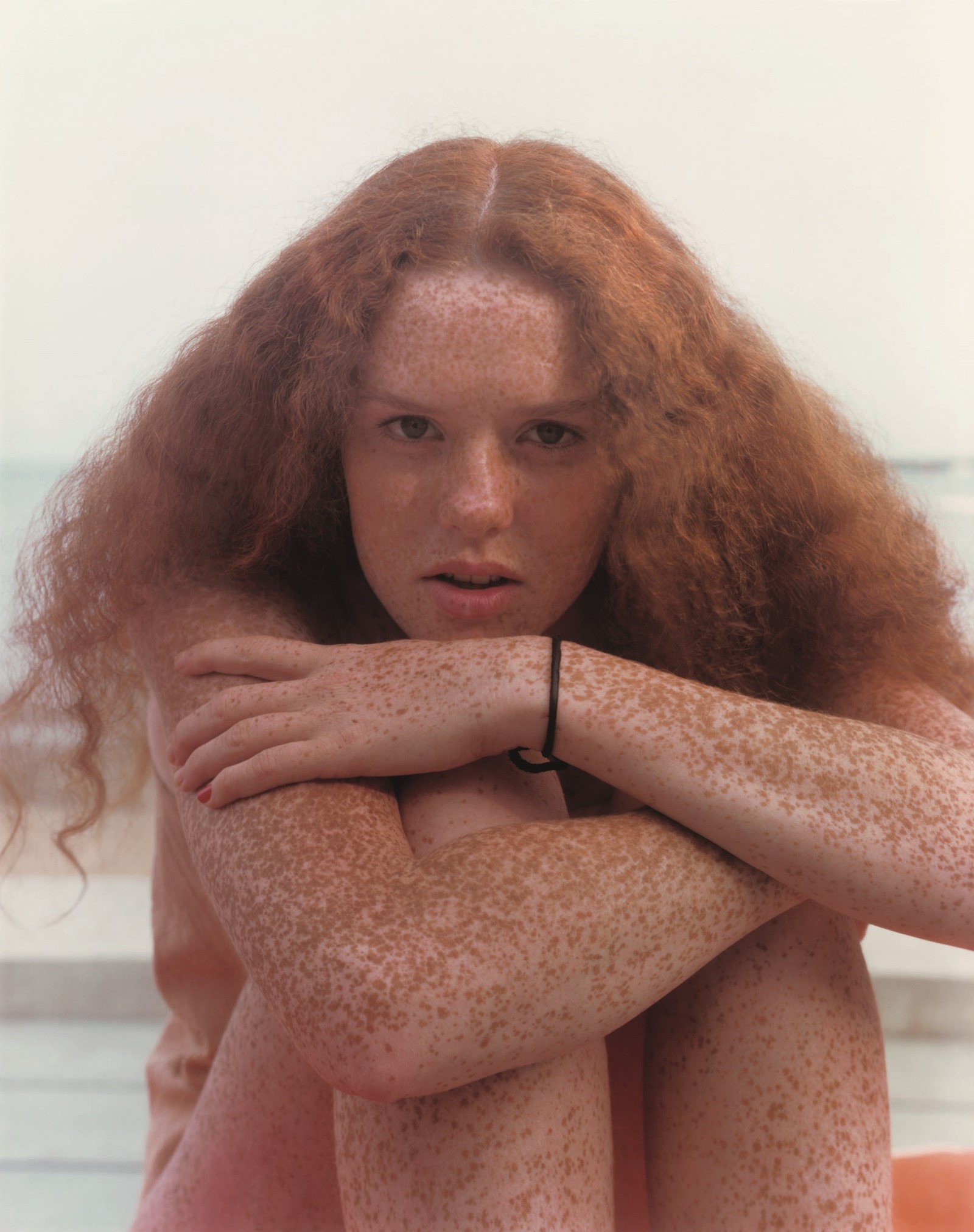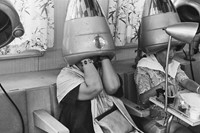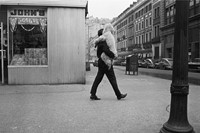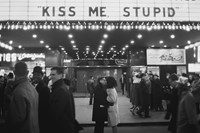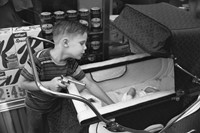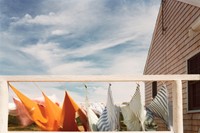There’s an element of magic, a certain ethereal candour that emanates from the work of Joel Meyerowitz. It could be the light, the movement, the frozen emotion, the tender spontaneity of a captured moment, or the irresistible variety of life itself. Most likely, it will be all of those things at once. “I embrace the complexities and contradictions of everyday life,” explains Meyerowitz, who for over five decades has been endlessly inspired by the vibrant energy of the urban environment. “People often feel the need to manage reality in such a way as to control their possible emotional responses to it. I want to do away with that. Reality is reality. It’s everything, all at the same time, and you have to find your stance within that uncontrollable, fleeting fragment of time.”
This fascination with the kaleidoscopic flux of everyday existence prompted the New York photographer to start shooting in colour as early as 1962, making him a member of the New Colour movement’s foremost triad of pioneers, alongside William Eggleston and Stephen Shore. “The astounding richness and tonal nuance of colour transfixes all platitude,” says Meyerowitz. “It’s what the world is; colour is life.”
“The astounding richness and tonal nuance of colour transfixes all platitude. It’s what the world is; colour is life” – Joel Meyerowitz
Now, an extensive new retrospective is celebrating the influence and contemporary relevance of his groundbreaking imagery. Held at Berlin’s C/O Gallery, Why Color? was born out of a desire to open up some of the most striking vintage material of Meyerowitz’s archive – both colour and black and white – to the bright-eyed gaze of today’s generation. “I’m at an age right now where I think it’s interesting to let other people look at the work and see whatever it is that they see, without me pointing it out to them. I want to give them that interpretative power. Who knows, I could be disappointed. What I think are my most telling pictures might go unnoticed; but it’s a risk I’m happy to take.”

Sure enough, risk-taking has been at the heart of the Bronx-born artist’s career since the very first time he picked up a camera, following his encounter with iconic street photographer Robert Frank. “Watching him work was a big turning point in my life,” recalls Meyerowitz. “At the time, I was a painter. I dropped Art History and everything I knew to move into this freefall of new ideas and possibilities. I quit my job and started to make photographs when I knew nothing about photography. I had no idea where I was going with it, or what would come of it, but I just knew in my gut I had to pursue this. It was a huge leap of faith.”
“When I switched to colour in the 60s, I immediately went to the street for inspiration. I loved the physicality of moving through crowds of people, that incredible gestural energy and fragmentation of urban life” – Joel Meyerowitz
Today, every ounce of that initial excitement remains intact. His awe-inspiring passion for the craft is palpable in his vivid frames, which are nothing short of a visual love letter to the unpredictable multiplicity of ordinary events. Meyerowitz’s photographs are also a testament to the streetwise elasticity of his medium. “When I switched to colour in the 60s, I immediately went to the street for inspiration. I loved the physicality of moving through crowds of people, that incredible gestural energy and fragmentation of urban life. That’s what appealed to me.”

This idea of energy is omnipresent in Meyerowitz’s work, and it’s closely connected to what he and other seminal photographers – including Garry Winogrand – have called ‘the sixth sense’. “Think about your daily actions and observations, and the moments when you just see something that kind of startles you. That’s inspiration,” he argues. “You’re just existing, and then something beyond your conceptual framework suddenly reveals itself to you; the way light falls, or a gesture somebody makes, a sound you hear, even a smell coming out of a bakery. This event will alert your senses – all of your senses – and this is what we call the sixth sense: this unifying principle of energy that activates our human alertness.”
“I don’t see a lot of photography that deals with complexity, nuance and inter-relationships... This photographic flatness has become part of the aesthetic now. To me, that’s so fucking boring” – Joel Meyerowitz
A fierce adept of creative immersion, contrasts and unpredictability, the veteran fine art photographer infuses his work with an ever-present consciousness of potentiality and a deep sense of awareness. As such, somewhat unsurprisingly, he isn’t a fan of the ways in which social media and the insatiable modern day visual consumerism have impacted our understanding of image making. “The kind of pictures we see today are very simple and iconographic,” he asserts. “I don’t see a lot of photography that deals with complexity, nuance and inter-relationships. It’s part of the Instagram mentality of depicting one-dimensional, separate things: a plate of food in a restaurant, or some nice-looking necklace. This photographic flatness has become part of the aesthetic now. To me, that’s so fucking boring.”
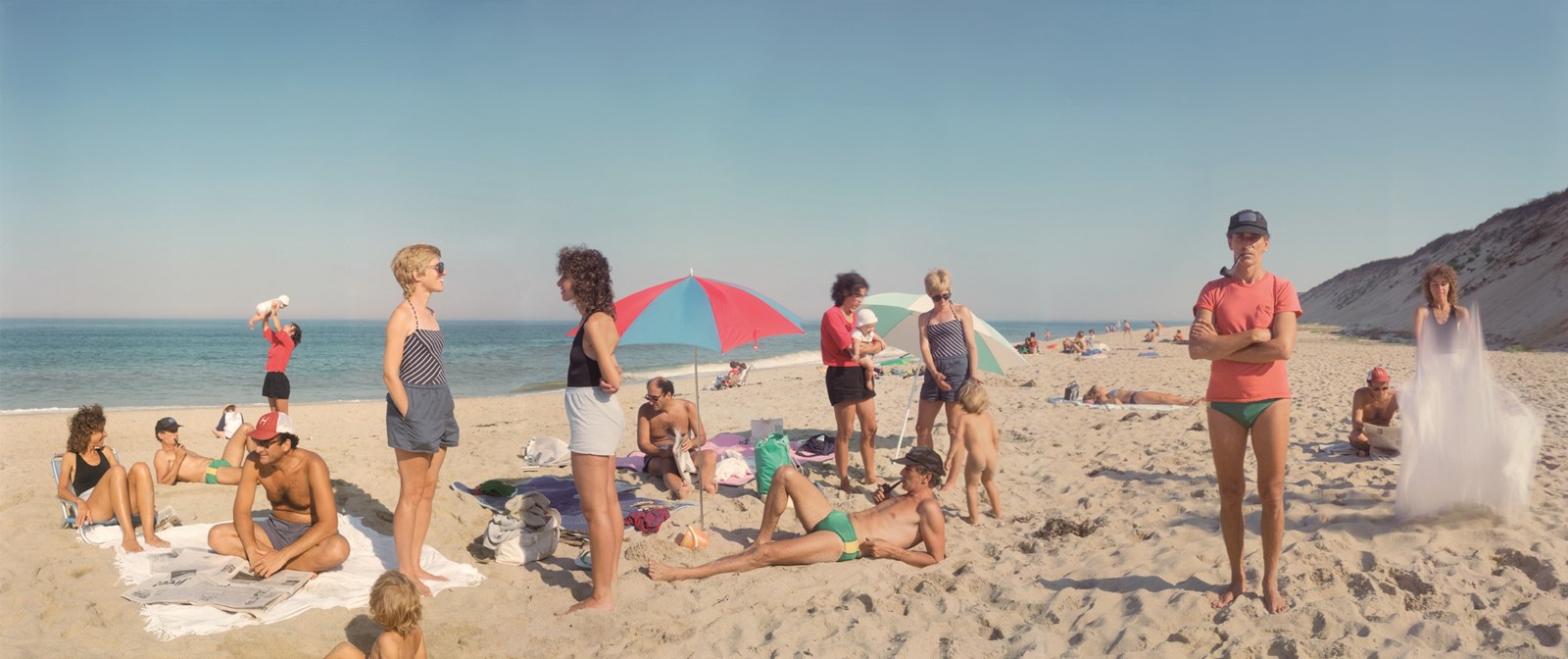
Having spent years fine-tuning his receptiveness to the boundless chromatic and dynamic diversity of the urban world, Joel Meyerowitz wants us all to stop being afraid of our unique perceptive intuition and creative discourse. “Instead of fitting into a mold, doesn’t it seem like the most important thing to try to find your individual voice, your identity?” he concludes. “It’s not like you’re trying to separate yourself from everyone else; you’re just trying to figure out who the hell you are. That’s the beauty of life.”
Joel Meyerowitz. Why Color? runs until March 13, 2018 at C/O Berlin.
